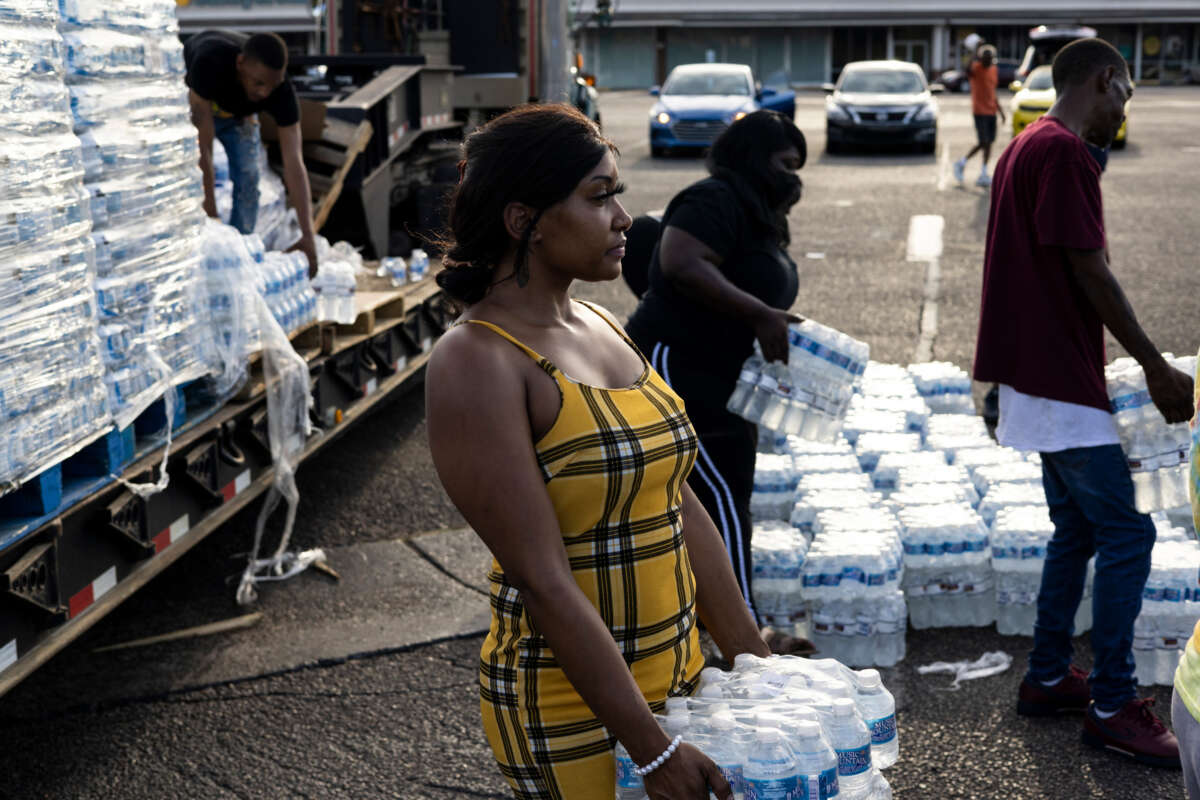The Bipartisan Infrastructure Law, signed by President Biden last November, is pouring billions of dollars into an upgrade of the country’s aging water infrastructure. But a new study has found that white communities have been favored in distribution of the funds, something that’s controlled by individual states.
The majority of the $55 billion allocated to water infrastructure will be distributed by states as part of low-interest revolving loan fund programs. A study by the Natural Resources Defense Council found communities of color are statistically less likely to receive the money compared to municipalities with larger white populations.
Becky Hammer, who co-authored the report, said researchers focused on the state revolving fund because the program has been a major source of federal funding for wastewater and stormwater infrastructure projects in the country for decades and it got a significant boost thanks to the infrastructure bill.
“There’s not a lot of publicly available information about who is getting the money,” Hammer said. “When Congress was working on the bipartisan infrastructure bill, we were asking them to put more money into the program to help address the huge backlog of infrastructure needs, but the question arose, how are the states doing at distributing the funding?”
For this study, researchers with NRDC, a nonprofit international environmental advocacy group, analyzed allocation data for the Clean Water State Revolving Fund between 2011 and 2020.
Researchers found that communities of color often bear the greatest burden of inequitable access to clean water infrastructure and have the most severe need for revolving fund resources. When the population of white people increases by 10%, there’s a small increase in the possibility of receiving funds.
“While the magnitude of this discrepancy is relatively small, it is nonetheless concerning given the importance of distributional equity to the goals of the CWSRF program, and given the range of other barriers—such as disproportionate environmental, socioeconomic, or health burdens—making it more difficult for communities of color to complete infrastructure improvements,” the report said.
While it’s difficult to pinpoint the reason for this outcome, Hammer said, one factor is the broad discretion states have in distributing the funds.
“There are a few choices that states make that tend to produce less equitable results,” said Hammer, adding that some areas lacking basic sewage systems don’t qualify for this type of federal funding.
The report blamed systemic racism and disinvestment for the rise in inequities in water infrastructure, adding that without federal funding water systems have to rely on local sources of revenue to pay for maintenance, which has deepened along racial and economic lines. On top of that, historically redlined communities are at a higher risk for urban flooding. Residents face rate hikes for water and sewer bills, creating water affordability challenges for many communities across the country. For communities that experienced white flight, revenue from billing may not be enough.
The NRDC report also recommends states update their project prioritization ranking system to “give greater weight to projects benefiting communities that are currently underserved” and offer favorable loan terms to underserved applicants.
Another key policy recommendation is to provide technical assistance to water systems during the application process. That’s because utility companies serving larger and wealthier communities employ in-house engineers and have resources to hire outside consultants to help them through the lengthy funding application while smaller communities do not have the technical capacity to apply for the funds.
Jennifer Sloan Ziegler, vice president for the American Society of Civil Engineers’ Environmental and Water Resource Institute, said many water systems don’t have the resources needed to even apply for the federal funds, such as hiring outside consultants to produce documentation that’s required.
“If they don’t apply, they will never get the money,” Sloan Ziegler said. “We need a way to help disadvantaged communities pay for the upfront costs needed to apply.”
Sloan Ziegler said the infrastructure bill was an important step in addressing aging water infrastructure. But according to an analysis by her organization, an additional $2 trillion in the next decade is needed.
Advocated point to the passage of the Clean Water Act of 1972 as the last transformational investment in water infrastructure. It led to the construction of sewage treatment plants across the country. The federal government provided about 70% of the funds needed to build and upgrade treatment plants. By 1988, the federal government transitioned to a new system in which grants were replaced by subsidized loans from a “revolving fund,” according to the book, Water 4.0: The Past, Present, and Future of the World’s Most Vital resource.
Without further direct federal funding, the popularity of the loan program grew. A second revolving fund was created when drinking water laws were tightened. The program is now one of the few federal funding sources to fund water and wastewater projects, according to the book.
In order to survive, many water systems delayed repairs. While the strategy of delaying maintenance worked in the short term, the failing systems now have public health implications.
The water crisis in Jackson, Mississippi is a clear example of how this dynamic has played out and the community is not alone.
“What’s happening in Jackson will become more and more common across the United States,” Sloan Ziegler said.
Press freedom is under attack
As Trump cracks down on political speech, independent media is increasingly necessary.
Truthout produces reporting you won’t see in the mainstream: journalism from the frontlines of global conflict, interviews with grassroots movement leaders, high-quality legal analysis and more.
Our work is possible thanks to reader support. Help Truthout catalyze change and social justice — make a tax-deductible monthly or one-time donation today.
